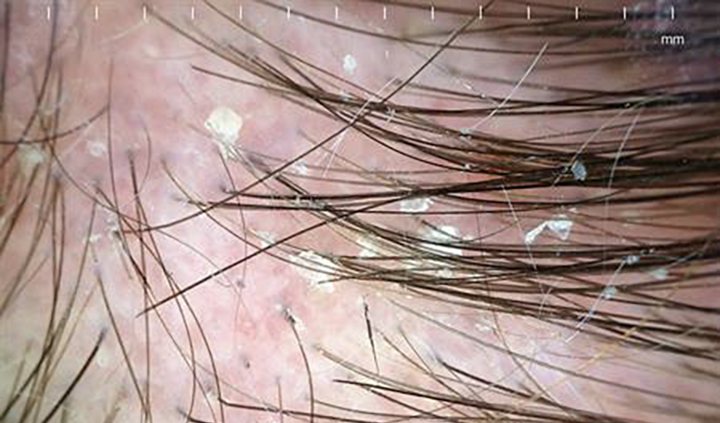Seborrheic dermatitis is a chronic, relapsing inflammatory skin condition characterized by erythematous plaques, greasy scales, and persistent itching, primarily affecting areas rich in sebaceous glands. It commonly manifests on the scalp, face, upper chest, and back. The condition is non-contagious but can significantly impair quality of life due to its visibility and recurring nature.

Primary Causes and Risk Factors
Seborrheic dermatitis arises from a combination of endogenous and exogenous factors. Key contributors include:
- Malassezia yeast overgrowth: This lipophilic fungus is part of the normal skin flora but proliferates under certain conditions, triggering an inflammatory immune response.
- Sebaceous gland activity: Excess sebum provides an optimal environment for Malassezia to thrive.
- Genetic predisposition: A familial tendency to inflammatory skin disorders increases susceptibility.
- Neurological and immunosuppressive conditions: Patients with Parkinson’s disease, HIV/AIDS, or those under immunosuppressive therapy often experience severe seborrheic dermatitis.
Exacerbating Factors
- Cold, dry weather
- Stress and fatigue
- Hormonal changes
- Use of harsh soaps or skin products
- Infrequent cleansing in affected areas
Recognizing the Symptoms of Seborrheic Dermatitis
Seborrheic dermatitis presents with distinctive clinical features depending on the anatomical location:
| Affected Area | Common Symptoms |
|---|---|
| Scalp | Flaky dandruff, greasy scales, itching, inflammation |
| Face | Redness around the nose, eyebrows, ears, and hairline |
| Chest/Back | Scaly patches with yellowish crusts on oily skin |
| Eyelids | Flaking and irritation (seborrheic blepharitis) |
In infants, a related condition known as cradle cap appears as thick, crusty, yellowish scales on the scalp.
Differential Diagnosis
Seborrheic dermatitis may resemble other dermatological conditions. Accurate diagnosis is essential to distinguish it from:
- Psoriasis (scalp psoriasis)
- Atopic dermatitis
- Rosacea
- Tinea capitis
- Contact dermatitis
Diagnosis is primarily clinical, though skin scrapings may be examined to exclude fungal infections.
Evidence-Based Treatment Strategies
1. Topical Antifungals
Topical antifungal agents are first-line treatments to reduce Malassezia colonization:
- Ketoconazole 2% shampoo or cream
- Ciclopirox olamine
- Selenium sulfide
- Zinc pyrithione
These agents should be applied 2–3 times weekly, even during remission periods to prevent relapse.
2. Topical Corticosteroids
Short-term use of low-potency corticosteroids (e.g., hydrocortisone 1%) is effective for reducing inflammation during flare-ups. Long-term use should be avoided due to potential skin atrophy.
3. Topical Calcineurin Inhibitors
For sensitive areas such as the face and eyelids, calcineurin inhibitors (e.g., tacrolimus, pimecrolimus) offer anti-inflammatory benefits without the risks associated with corticosteroids.
4. Keratolytics
Agents such as salicylic acid and coal tar help remove scales and reduce skin thickness, improving the penetration of antifungal agents.
5. Systemic Treatments
In severe or treatment-resistant cases, oral antifungals like itraconazole may be prescribed under specialist supervision.
Lifestyle and Maintenance Measures
Effective long-term control involves daily skin care and preventive habits:
- Use mild, fragrance-free cleansers.
- Wash hair regularly with medicated shampoos.
- Avoid oily skincare products that may feed fungal growth.
- Manage stress through techniques such as meditation or exercise.
- Moisturize regularly to maintain skin barrier integrity.
Prognosis and Recurrence
Seborrheic dermatitis is chronic with periods of remission and recurrence. While not curable, consistent treatment and maintenance strategies can minimize flare-ups and improve patient comfort.
Complications If Left Untreated
- Secondary bacterial or fungal infections
- Persistent redness and scaling
- Psychosocial distress from visible symptoms
- Possible hair loss in chronic scalp involvement
Special Considerations: Seborrheic Dermatitis in Infants and Immunocompromised Individuals
- Infants: Cradle cap usually resolves spontaneously by 12 months. Mild emollients or baby shampoos may help.
- HIV/AIDS and Neurologic Patients: These groups often require more aggressive treatment and closer dermatologic monitoring due to higher severity and recurrence rates.
When to Consult a Dermatologist
Professional consultation is recommended if:
- Over-the-counter treatments fail to improve symptoms.
- Lesions become painful or infected.
- The condition spreads beyond typical regions.
- Diagnostic uncertainty exists with similar conditions.
Seborrheic dermatitis is a multifactorial, chronic skin disorder influenced by sebaceous activity, microbial overgrowth, and immune response. Effective management requires a structured approach involving antifungal therapy, inflammation control, and ongoing maintenance. With tailored treatment plans and lifestyle adjustments, long-term symptom control is attainable.